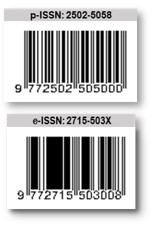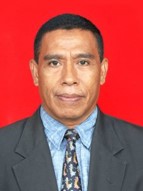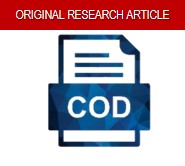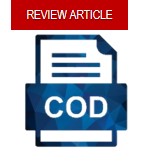Alcohol Abuse Among Minors in Tirtomoyo
Patterns, Contributing Factors, And Prevention Strategies
DOI:
https://doi.org/10.46924/jihk.v7i1.296Keywords:
Alcohol Abuse, Minors, Criminal Behavior, Prevention Strategies, Community-Based ApproachAbstract
The abuse of alcoholic beverages by minors in Tirtomoyo District has been associated with an increase in various criminal acts, particularly physical abuse and sexual harassment. This study aims to identify the criminogenic factors contributing to this phenomenon, analyze the types of crimes that emerge as a result, and evaluate the effectiveness of prevention strategies implemented by both authorities and local communities. A qualitative-descriptive method was employed, utilizing interviews, direct observations, and documentation of police records from the Tirtomoyo Police Department spanning 2019 to 2022. The findings indicate that psychological instability, dysfunctional family environments, and a permissive social culture are among the primary contributing factors. Prevention efforts are currently conducted through community-based strategies encompassing repressive, preventive, and preemptive measures. The study concludes that effective mitigation requires cross-sector collaboration and the adoption of a context-sensitive legal framework to prevent the escalation of alcohol-related offenses among minors.
Downloads
References
Journals
Ahmad, Madina Mulia, Fence M. Wantu, and Mohamad Taufiq Zulfikar Sarson. “Tindak Pidana Penganiayaan Yang Diakibatkan Mengkonsumsi Minuman Beralkohol Oleh Anak Dari Aspek Kriminologi (Studi Kasus Polres Gorontalo Kota).” Jurnal Hukum, Politik Dan Humaniora 1, no. 3 (2024): 139–51. https://doi.org/10.62383/progres.v1i3.505 .
Ahmed, Saz P., Amanda Bittencourt-Hewitt, and Catherine L. Sebastian. “Neurocognitive Bases of Emotion Regulation Development in Adolescence.” Developmental Cognitive Neuroscience 15 (2015): 11–25. https://doi.org/10.1016/j.dcn.2015.07.006.
Amaro, Hortensia, Mariana Sanchez, Tara Bautista, and Robynn Cox. “Social Vulnerabilities for Substance Use: Stressors, Socially Toxic Environments, and Discrimination and Racism.” Neuropharmacology 188 (2021): 1–21. https://doi.org/10.1016/j.neuropharm.2021.108518.
Atmaja, I Wayan Yuda, Anak Agung Sagung Laksmi Dewi, and I Made Minggu Widyantara. “Tinjauan Kriminologis Terhadap Penyalahgunaan Minuman Beralkohol Oleh Anak Di Kabupaten Bangli.” Jurnal Preferensi Hukum 5, no. 1 (2023): 69–75. https://doi.org/10.22225/jph.5.1.8710.69-75.
Beck, Anne, and Andreas Heinz. “Alcohol-Related Aggression: Social and Neurobiological Factors.” Deutsches Ärzteblatt 110, no. 42 (2013): 711–15. https://doi.org/10.3238/arztebl.2013.0711.
Canter, David, and Donna Youngs. “Crime and Society.” Contemporary Social Science 11, no. 4 (2016): 283–88. https://doi.org/10.1080/21582041.2016.1259495.
Huang, Wan, Xiaojin Chen, and Yuning Wu. “Education Fever and Adolescent Deviance in China.” Crime & Delinquency 70, no. 10 (2023): 2826–50. https://doi.org/10.1177/00111287231174421.
Loke, Alice Yuen, and Yim-wah Mak. “Family Process and Peer Influences on Substance Use by Adolescents.” International Journal of Environmental Research and Public Health 10, no. 9 (2013): 3868–85. https://doi.org/10.3390/ijerph10093868.
Merton, Robert King. “Social Structure and Anomie.” American Sociological Review 3, no. 5 (1938): 672–82.
Nurhayati, Mela, and Hana Faridah. “Analisis Dan Kajian Kriminologi Hukum Dalam Kasus Minuman Berakhol Pada Anak Dibawah Umur Di Desa Mulyasari.” The Juris: Jurnal Ilmu Hukum 6, no. 2 (2022): 319–24. https://doi.org/10.56301/juris.v6i2.598.
Putra, Salit Ngurah Bagus Adi, Ni Putu Rai Yuliartini, and Dewa Gede Sudika Mangku. “Tinjauan Kriminologis Terhadap Penyalahgunaan Minuman Beralkohol Oleh Anak Di Kabupaten Buleleng.” Jurnal Komunitas Yustisia 4, no. 1 (2021): 107–18. https://doi.org/10.23887/jatayu.v4i1.33035.
Ratti, M T, A Giardini P Bo, and D Soragna. “Chronic Alcoholism and the Frontal Lobe: Which Executive Functions Are Imparied?” Acta Neurologica Scandinavica 105, no. 4 (2002): 276–81. https://doi.org/10.1034/j.1600-0404.2002.0o315.x.
Ryzin, Mark J Van, Gregory M Fosco, and Thomas J Dishion. “Family and Peer Predictors of Substance Use From Early Adolescence to Early Adulthood: An 11-Year Prospective Analysis.” Addictive Behaviors 37, no. 12 (2012): 1314–24. https://doi.org/10.1016/j.addbeh.2012.06.020.
Sacco, Paul, Charlotte Lyn Bright, Hyun-Jin Jun, and Laura M. Stapleton. “Developmental Relations Between Alcohol and Aggressive Behavior Among Adolescents: Neighborhood and Sociodemographic Correlates.” International Journal of Mental Health and Addiction 13 (2015): 603–617. https://doi.org/10.1007/s11469-015-9546-1.
Suswati, Irma, Rahayu, Anisa Putri Maulida, and Aan Dwi Prasetio. “Managing Mental Disorders in Intracranial Hemorrhage (ICH) Patients: A Case Study on The Importance of Early Recognition and Intervention.” Brain Hemorrhages 5, no. 1 (2024): 42–45. https://doi.org/10.1016/j.hest.2023.02.005.
Takilala, Julio Cesar. “Pengaruh Mabuk Minuman Keras Oleh Anak Terhadap Timbulnya Perkelahian Di Kecamatan Sengah Temila Kabupaten Landak Ditinjau Dari Sudut Pandang Kriminologi.” Gloria Yuris Jurnal Hukum Prodi Ilmu Hukum Untan 3, no. 3 (2015): 1–82. https://jurnal.untan.ac.id/index.php/jmfh/article/view/10464.
Thesis
Reynolds, Bertlyn Gretna. “Preparing The Young Offender for Return to Society: A Theoretical Evaluation of Guyanese Juvenile Delinquents’ Narratives Based on General Treatment Models.” Wayne State University, 2011.
Books
Bonger, Willem Adriaan. An Introduction to Criminology. London: Methuen & Co. Ltd, 1936.
Hirschi, Travis. Causes of Delinquency. 1st ed. New York: Routledge, 2002. https://doi.org/10.4324/9781315081649.
Miles, Matthew B., A. Michael Huberman, and Johnny Saldana. Qualitative Data Analysis: A Methods Sourcebook. New York: SAGE Publications, Inc, 2018.
Shaw, Clifford, and Henry D. McKay. Juvenile Delinquency and Urban Areas: A Study of Rates of Delinquents in Relation to Differential Characteristics of Local Communities in American Cities. Chicago: The University of Chicago Press, 1942.
Downloads
Published
Issue
Section
License
Copyright (c) 2025 Aditya Citra Firmansyah, Hanuring Ayu

This work is licensed under a Creative Commons Attribution 4.0 International License.
Authors who publish with this journal agree to the following terms:
- Copyright on any article is retained by the author(s).
- The author grants the journal, the right of first publication with the work simultaneously licensed under a Creative Commons Attribution License that allows others to share the work with an acknowledgment of the work’s authorship and initial publication in this journal.
- Authors are able to enter into separate, additional contractual arrangements for the non-exclusive distribution of the journal’s published version of the work (e.g., post it to an institutional repository or publish it in a book), with an acknowledgment of its initial publication in this journal.
- Authors are permitted and encouraged to post their work online (e.g., in institutional repositories or on their website) prior to and during the submission process, as it can lead to productive exchanges, as well as earlier and greater citation of published work.
- The article and any associated published material is distributed under the Creative Commons Attribution 4.0 International License



 Sinta ID:
Sinta ID: 


















